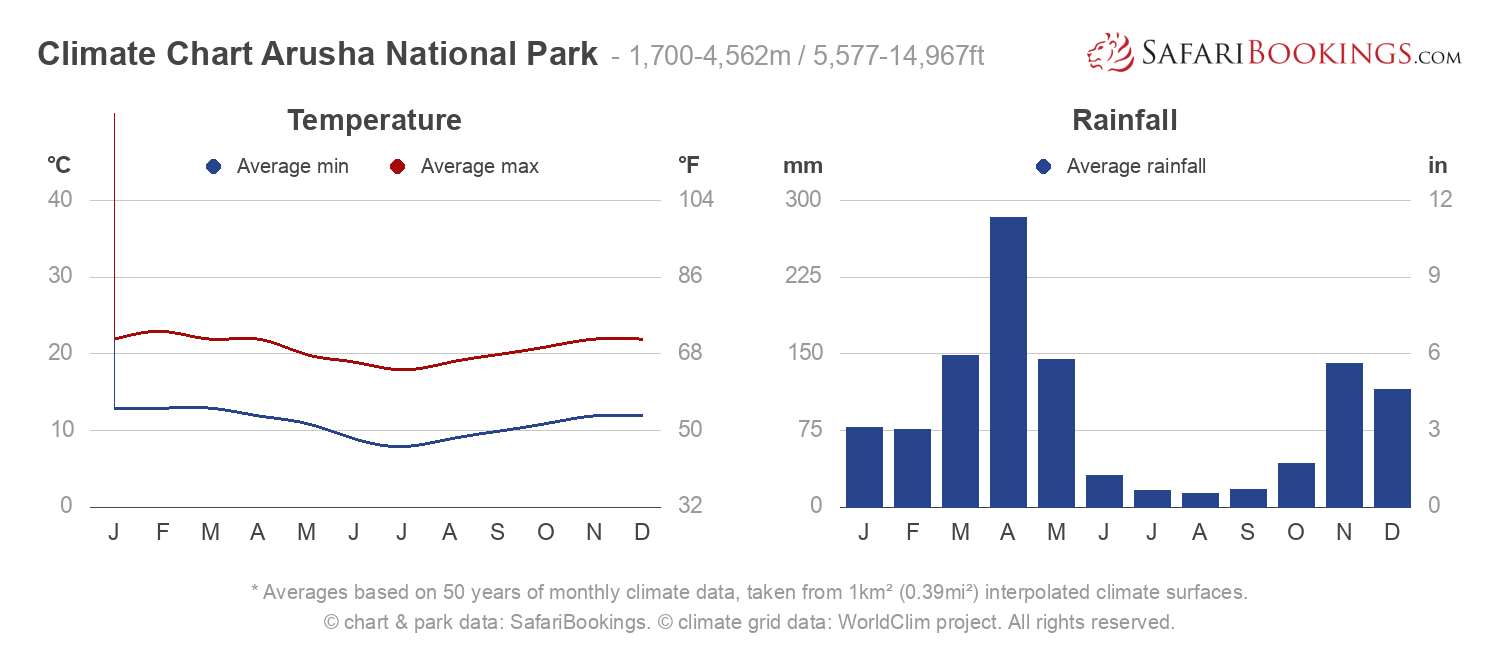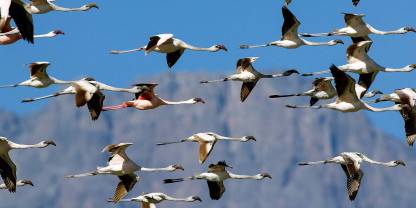
Climate Chart Arusha National Park – 1,700-4,562m / 5,577-14,967ft
Arusha National Park’s climate is normally pleasant and mild. It rarely gets hot during the day and it is usually cool to cold at night and in the early morning. It is important to pack warm clothing for use in the evenings and on game drives.
The Dry season is from June to October. The Wet season consists of two rainy periods (the short rains from November to December and the long rains from March to May), with a dry spell in between. Afternoon thundershowers are common in the Wet season, but it would be rare for it to rain all day. Arusha National Park incorporates Mt Meru, which creates a microclimate with more rain and clouds than is typical for the area.
Dry Season June to October
Temperatures in the afternoon are generally around 19°C/66°F. Sunny weather and clear skies are common during the day.
- June, July, August & September – Expect cold nights with temperatures around 9°C/48°F at a minimum. There can be occasional cold fronts with temperatures near freezing. Warm clothes are strongly recommended for early morning game drives.
- October – The short rains could start in October if they arrive early.
Wet Season November to May
The Wet season's temperatures are mild, similar to the Dry season. Temperatures in the afternoon are usually around 22°C/72°F, while temperatures at night are around 12°C/54°F.
- November & December – 'Short rains' – A month of unpredictable rains usually occurs between November and December. The rains rarely affect your safari since it is unusual for it to rain all day long. Showers during the afternoon are likely.
- January & February – Usually, there is a dry period between the rains, but it is not possible to predict this with accuracy.
- March, April & May – 'Long rains' – These months are the wettest. It rains most days, but rarely all day long. Clouds are common.

